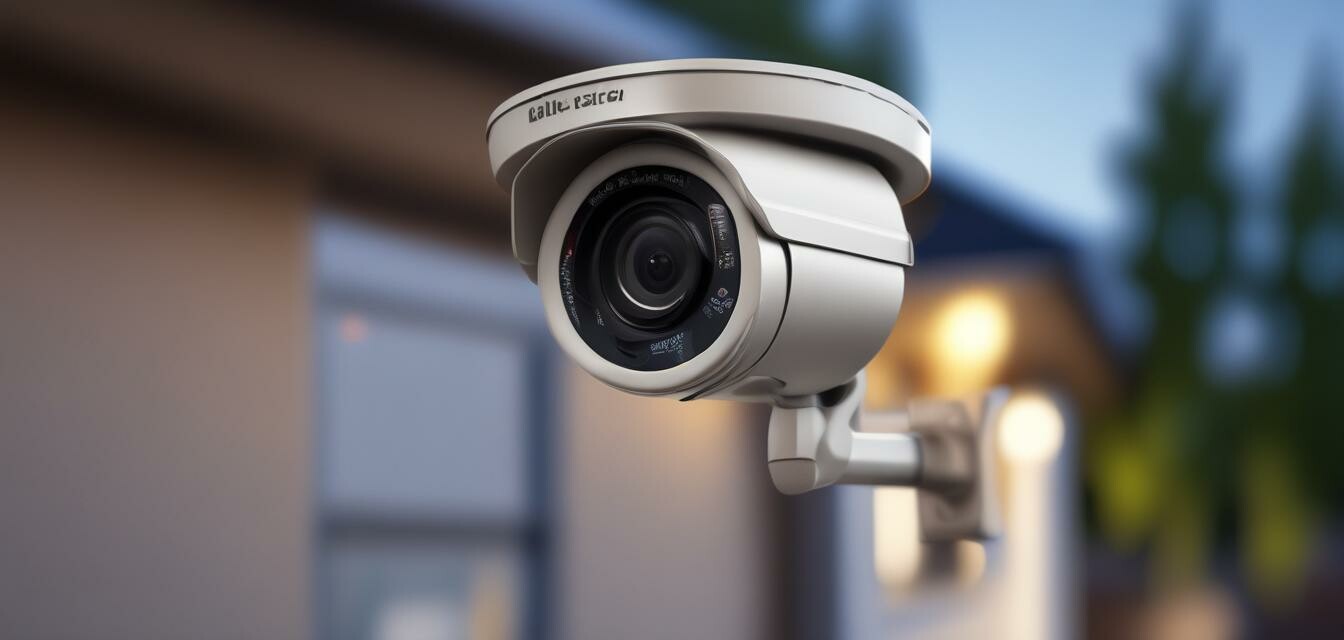
Top Features to Consider in a Security Camera
- Understanding essential features helps in choosing the right security camera.
- Resolution, night vision, and smart connectivity are pivotal factors.
- Different types of security cameras cater to different needs.
- Research and comparisons can simplify your buying decision.
Investing in a security camera is a crucial step toward enhancing the safety of your home. With an array of options available in the market, it's easy to feel overwhelmed. However, knowing the key features to look for can simplify the selection process and aid in making an informed decision.
Why Choose a Security Camera?
Security cameras are a primary component of any comprehensive home security system. They provide peace of mind by monitoring your property, deterring potential intruders, and capturing events in real time. With advancements in technology, modern security cameras offer features that cater to diverse needs and preferences.
Essential Features to Look For
1. Resolution
A camera's resolution determines the clarity and detail of the video footage it records. Higher resolution cameras provide better image quality, which is vital if you need to identify faces or license plates.
| Resolution Type | Image Quality |
|---|---|
| 720p (HD) | Good for basic monitoring |
| 1080p (Full HD) | Clear and detailed image |
| 4MP / 5MP | High-quality footage with more detail |
| 4K UHD | Exceptional quality, perfect for detailed evaluations |
2. Night Vision
Many security incidents occur after dark, making night vision an essential feature. Look for cameras equipped with infrared capabilities, which allow them to capture clear images even in low light conditions.
3. Field of View (FOV)
The field of view indicates how much area a security camera can capture. A wider FOV means fewer cameras may be needed to cover an area. Here's a breakdown:
- Narrow FOV: Ideal for focused monitoring (e.g., entrances).
- Wide FOV: Best suited for expansive spaces (e.g., backyards).
4. Smart Connectivity
Smart security cameras can connect to your home network, allowing remote access to camera feeds via smartphones and tablets. Additionally, features like motion alerts and cloud storage can enhance security. Look for categories such as:
| Connectivity Type | Benefits |
|---|---|
| Wi-Fi | Easy installation; remote monitoring |
| Wired | More reliable connection; often better video quality |
5. Two-Way Audio
This feature allows you to communicate through the camera using your smartphone. It's beneficial for greeting guests, scaring off potential intruders, or interacting with delivery personnel.
6. Weather Resistance
If you plan to install cameras outdoors, ensure they are weather-resistant. Typically rated by the IP (Ingress Protection) standard, look for ratings like:
- IP65: Dust-tight and protected against water jets.
- IP67: Dust-tight and withstands immersion in water.
7. Storage Options
Where your camera stores footage is crucial. Options include:
- Cloud Storage: Accessible from anywhere but may involve subscription costs.
- Local Storage: Often done via SD cards, which don’t incur ongoing fees.
8. Motion Detection
Having a camera with motion detection capabilities can save storage space and alert you to movement on your property. Advanced cameras can differentiate between people, pets, and inanimate objects, minimizing false alarms.
9. Integration with Other Security Systems
Consider how well the camera integrates with existing security systems like alarms and smart home devices. This feature enhances overall security by ensuring that multiple components work in tandem.
Comparing Different Types of Security Cameras
Understanding the variations among camera types is crucial for making an informed choice. Here’s a quick comparison of popular camera types:
| Camera Type | Best Use | Pros | Cons |
|---|---|---|---|
| Indoor Cameras | Home interior security | Compact; easy installation | Limited outdoor use |
| Outdoor Cameras | Home exterior security | Weather-resistant; wide coverage | More expensive; installation could be complex |
| Wireless Cameras | Versatile location choices | Easy setup; flexible placement | Dependent on Wi-Fi connection |
| Wired Cameras | Stable, high-quality feed | Reliable connection; no battery changes | Installation can be difficult; less flexible placement |
Conclusion
Choosing the right security camera is critical in protecting your home and loved ones. Focusing on key features such as resolution, night vision, and smart connectivity will guide you toward the ideal choice. Make sure to conduct thorough research, compare different models, and evaluate your specific needs.
Pros
- Enhanced safety and peace of mind.
- Ability to monitor your home remotely.
- Deterrent to potential intruders.
- Wide range of options available to suit various needs.
Cons
- Initial costs can be high.
- Some models may require subscriptions for full features.
- Technical issues can sometimes arise.
For more information on home security systems, check out our other resources in the Home Security Buying Guides section. Our articles cover everything from installation tips to the latest in security technology trends.
